Je Tsongkhapa, also known as Lama Tsongkhapa, was a Tibetan Buddhist master who lived from 1357 to 1419. He was a prolific writer, philosopher, and the founder of the Gelug school of Tibetan Buddhism, which is one of the major schools of Tibetan Buddhism today. Je Tsongkhapa’s life and teachings have had a profound impact on Tibetan Buddhism, influencing its practice, philosophy, and monastic traditions.
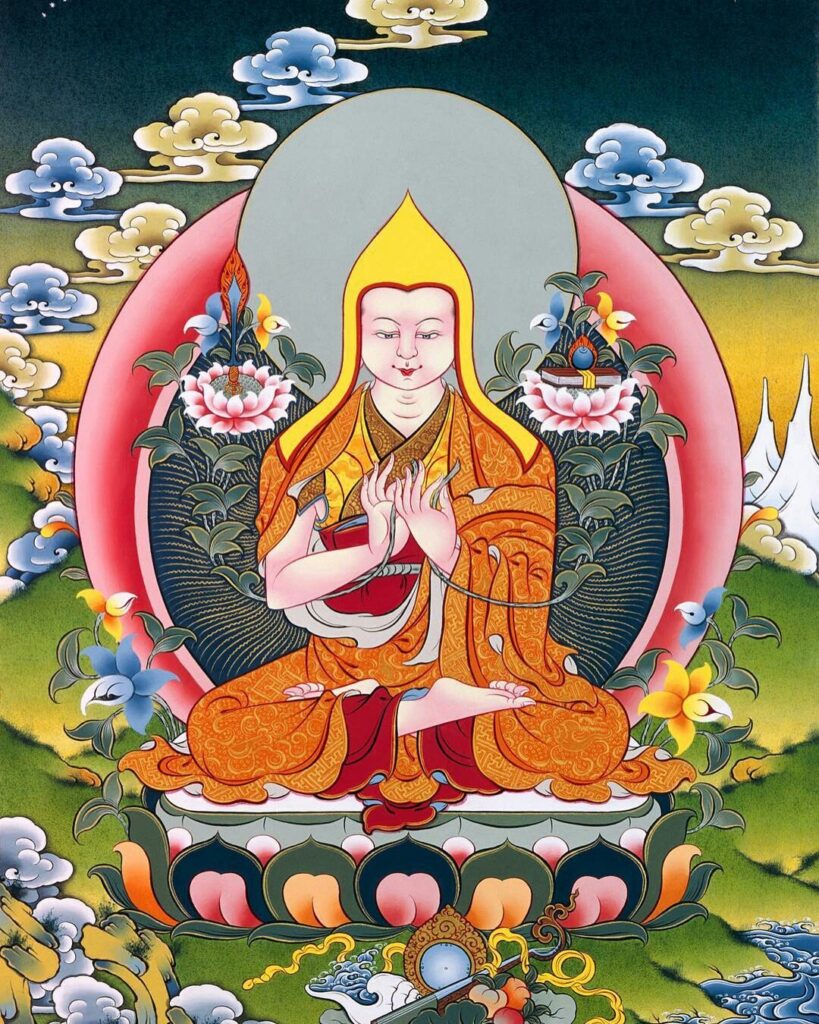
Early Life and Education
Je Tsongkhapa was born in the Amdo region of Tibet. His birth name was Lobsang Drakpa, and he was born into a family of devout Buddhists. From a young age, he showed great interest in Buddhist teachings and began his formal education at a local monastery.
Tsongkhapa’s early education was marked by his exceptional intelligence and dedication to learning. He studied the classical texts of Tibetan Buddhism under renowned scholars of the time, mastering the teachings of the Buddha and the commentaries of Indian Buddhist masters. His deep understanding of Buddhist philosophy and his ability to debate and defend his views earned him a reputation as a prodigious scholar.
Spiritual Quest
Despite his academic success, Tsongkhapa felt a deep sense of dissatisfaction with his spiritual practice. He embarked on a rigorous quest for spiritual realization, traveling to central Tibet to study under various masters and engage in intensive meditation retreats. During this time, he received teachings from the great masters of the Sakya, Kagyu, and Nyingma schools of Tibetan Buddhism, deepening his understanding of Buddhist philosophy and meditation practices.
Founding the Gelug School
After years of intense study and meditation, Tsongkhapa had a series of profound spiritual experiences that led him to develop his distinct approach to Buddhist practice. In 1409, he founded the Ganden Monastery in central Tibet, which became the seat of the Gelug school. The Gelug school emphasized the study of Buddhist philosophy, the practice of ethical conduct, and the cultivation of wisdom and compassion as the path to enlightenment.
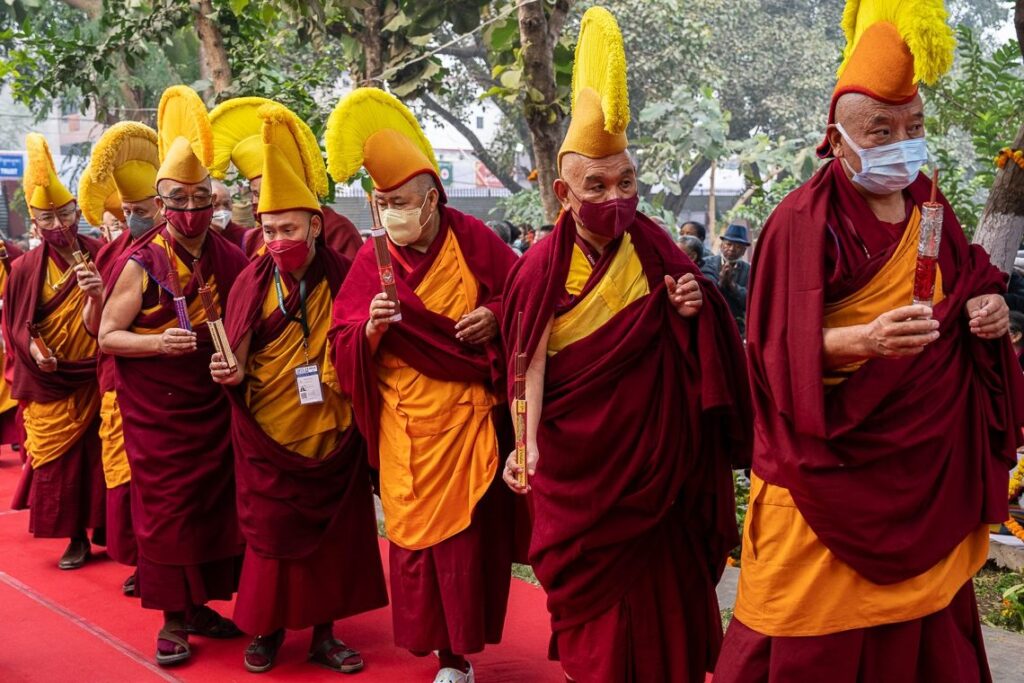
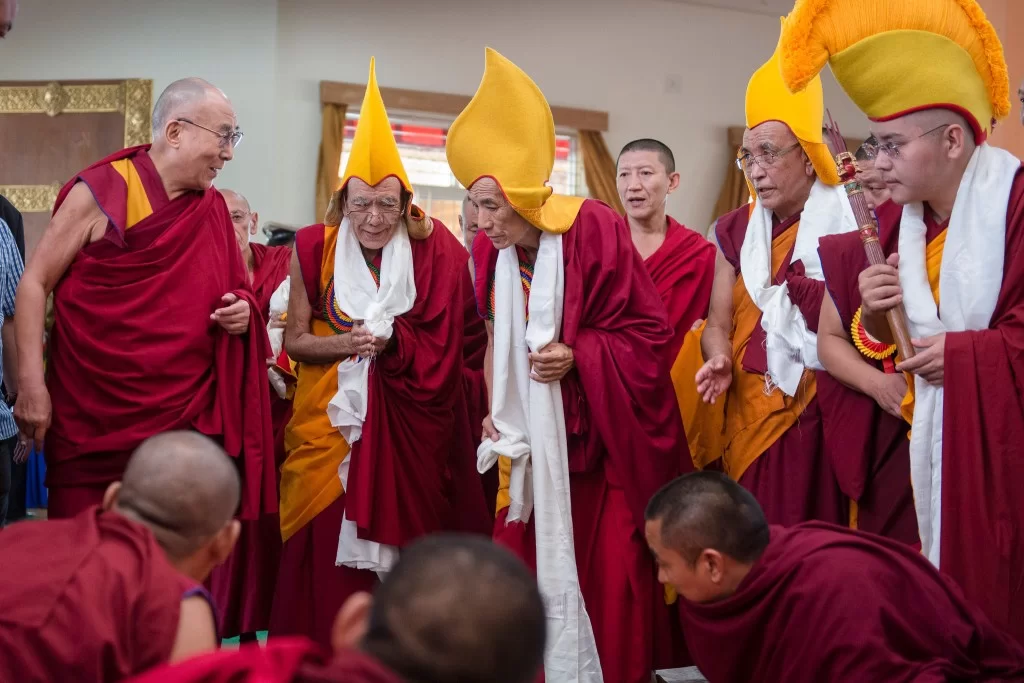
Tsongkhapa’s teachings attracted a large following, and his disciples became known for their scholarship, ethical conduct, and dedication to the Dharma. The Gelug school grew rapidly, eventually becoming one of the most influential schools of Tibetan Buddhism.
Major Contributions to Tibetan Buddhism
Je Tsongkhapa made several major contributions to Tibetan Buddhism, which continue to influence practitioners to this day. Some of his most significant contributions include:
The Lamrim Tradition
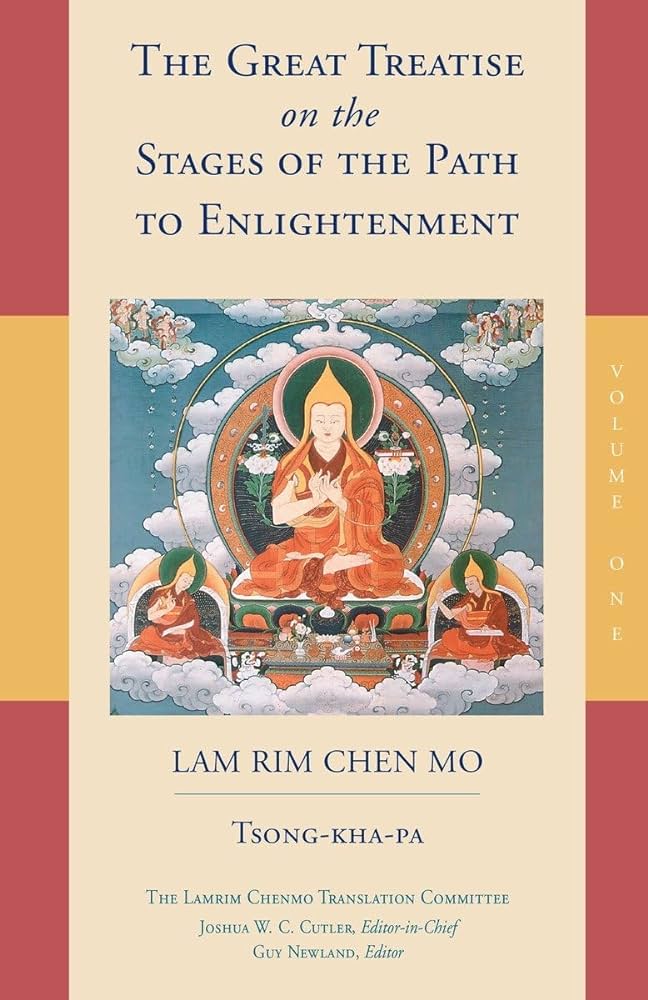

Tsongkhapa wrote extensively on the stages of the path to enlightenment, known as the Lamrim. His texts, such as the “Great Treatise on the Stages of the Path to Enlightenment,” provide a comprehensive guide to spiritual practice, from the basics of ethical conduct to the advanced practices of meditation and wisdom.
The Lamrim tradition, presents a step-by-step guide to spiritual development, from the very beginning stages of cultivating a good heart and ethical behavior to the advanced practices of meditation and wisdom. The Lamrim teachings are based on the teachings of the Buddha as presented in the Indian Buddhist classics and are meant to be a practical guide for practitioners of all levels.
Origins of the Lamrim Tradition
The Lamrim tradition traces its origins to the Indian master Atisha (982-1054 CE), who traveled to Tibet in the eleventh century and introduced the teachings of the Lamrim to the Tibetan people. Atisha’s most famous work, the “Lamp for the Path to Enlightenment,” laid the foundation for the Lamrim tradition and became a seminal text in Tibetan Buddhism.
Atisha’s teachings were further developed and systematized by later Tibetan masters, most notably Je Tsongkhapa (1357-1419), the founder of the Gelug school of Tibetan Buddhism. Tsongkhapa’s “Great Treatise on the Stages of the Path to Enlightenment” (Lamrim Chenmo) is considered one of the most authoritative and comprehensive texts on the Lamrim tradition.
Key Features of the Lamrim Tradition
The Lamrim tradition is characterized by several key features that distinguish it from other forms of Buddhist practice:
- Gradual Path
The Lamrim presents a gradual path to enlightenment, with each stage building upon the preceding ones. Practitioners are encouraged to progress at their own pace, gradually deepening their understanding and practice.
- Complete Path
The Lamrim teachings are considered a complete path to enlightenment, encompassing all aspects of Buddhist practice, including ethical conduct, meditation, and wisdom. The Lamrim texts provide detailed instructions on each stage of the path, making it accessible to practitioners of all levels.
- Integration of Sutra and Tantra
The Lamrim tradition emphasizes the integration of the sutra and tantra teachings, showing how the two complement each other and lead to the same ultimate goal of enlightenment. Practitioners are encouraged to study and practice both aspects of the teachings.
- Practical Orientation
The Lamrim teachings are highly practical, focusing on the application of Buddhist principles in everyday life. Practitioners are encouraged to apply the teachings to their own experiences and to cultivate positive qualities such as compassion, patience, and wisdom.
- Emphasis on Renunciation and Bodhichitta
The Lamrim teachings emphasize the importance of renunciation, or the determination to be free from samsara, the cycle of birth and death. They also emphasize the cultivation of bodhichitta, the altruistic intention to attain enlightenment for the benefit of all beings.
Madhyamaka Philosophy
Tsongkhapa revitalized the study and practice of Madhyamaka, the philosophy of the Middle Way. He wrote commentaries on the works of Nagarjuna and Chandrakirti, clarifying their teachings and presenting them in a systematic and accessible way.
Emphasis on Vinaya
Tsongkhapa emphasized the importance of ethical conduct and monastic discipline in the practice of Buddhism. He wrote extensively on the Vinaya, the code of conduct for Buddhist monks and nuns, and encouraged his followers to uphold high standards of ethical behavior.
Tantric Practice
While emphasizing the importance of ethical conduct and study, Tsongkhapa also taught advanced tantric practices to those who were ready. He wrote commentaries on the tantric texts of the Tibetan Buddhist tradition, providing guidance on deity yoga, mantra recitation, and other esoteric practices.
Unity of Sutra and Tantra
Tsongkhapa emphasized the unity of the sutra and tantra teachings, showing how the two complement each other and lead to the same ultimate goal of enlightenment. He stressed the importance of integrating both aspects of the teachings into one’s practice.
Legacy and Influence
Je Tsongkhapa’s legacy continues to be felt in Tibetan Buddhism and beyond. His Gelug school has produced many great scholars, teachers, and practitioners who have spread his teachings throughout the world. The Dalai Lama, the spiritual leader of Tibetan Buddhism, is a member of the Gelug school and has been instrumental in bringing Tsongkhapa’s teachings to a global audience.
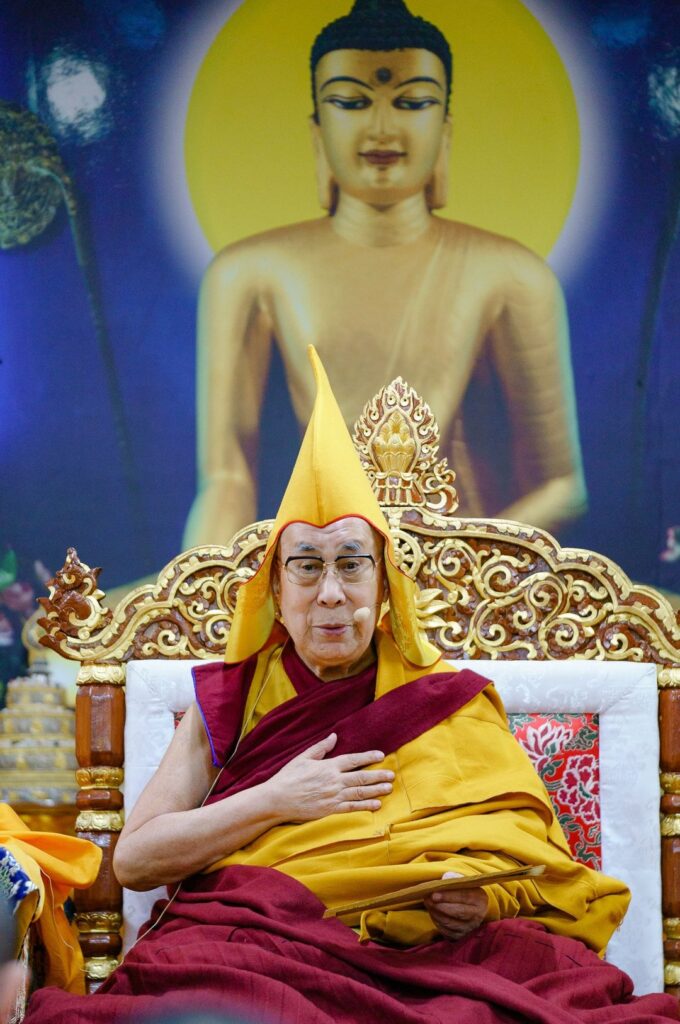
Tsongkhapa’s emphasis on scholarship, ethical conduct, and meditation practice has had a profound impact on Tibetan Buddhism, shaping its teachings and practices in fundamental ways. His writings continue to be studied and revered by Tibetan Buddhists of all traditions, and his example of dedication to the Dharma remains an inspiration to practitioners everywhere.
Conclusion
Je Tsongkhapa was a visionary teacher and philosopher whose life and teachings continue to inspire millions of people around the world. His emphasis on study, ethical conduct, and meditation practice provides a timeless roadmap for spiritual seekers seeking enlightenment in the modern world. Through his writings and the example of his life, Tsongkhapa remains a beacon of wisdom and compassion, guiding all who seek the path to enlightenment.
References
- Lopez, Donald S. “The Life of Tsong Khapa.” Snow Lion Publications, 1987.
- Thurman, Robert A. F. “Life and Teachings of Tsong Khapa.” Tibet House US, 2006.
- Tsongkhapa, Lama. “The Great Treatise on the Stages of the Path to Enlightenment.” Snow Lion Publications, 2000.
- Hopkins, Jeffrey. “Tsong-kha-pa’s Final Exposition of Wisdom.” Snow Lion Publications, 2008.
FAQ
Who is the head monk of Gelugpa?
The head monk of the Gelugpa tradition is known as the Ganden Tripa, who is the spiritual head of the Gelug school of Tibetan Buddhism.
What is ganden ngamchoe?
The literal meaning of Ganden Ngamchoe is “Ganden Offering of the Twenty-Fifth Day,” or Lama Tsongkhapa Day, which is a celebration of the anniversary of Lama Tsongkhapa’s parinirvana. It is celebrated on the twenty-fifth day of the tenth month of the Tibetan calendar.
Who is the founder of Gelugpa?
Je Tsongkhapa, also known as Lama Tsongkhapa, was a Tibetan Buddhist master who lived from 1357 to 1419. He was a prolific writer, philosopher, and the founder of the Gelug school of Tibetan Buddhism, which is one of the major schools of Tibetan Buddhism today.
FOLLOW US ON



